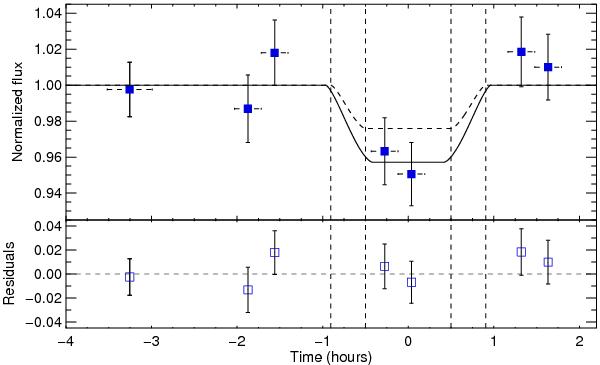Fig. 9

Plot of the total flux within the whole Lyman-α line, as a function of time (blue square symbols). Each HST orbit is divided into two 1127 s independent subexposures, corrected for the breathing effect (except for the first orbit, see Sect. 3.4.3). Time is given relative to the center of the planetary transit. Vertical dashed lines show the beginning and end of ingress and egress of the transit. Horizontal error bars centered on the symbols show the duration of the exposures. A light curve fitted with a classical planetary occultation model is displayed as a solid black line, with a transit depth in excess compared to the transit depth observed at optical wavelengths (dashed black line). The bottom panel shows the corresponding residuals (empty symbols).
Current usage metrics show cumulative count of Article Views (full-text article views including HTML views, PDF and ePub downloads, according to the available data) and Abstracts Views on Vision4Press platform.
Data correspond to usage on the plateform after 2015. The current usage metrics is available 48-96 hours after online publication and is updated daily on week days.
Initial download of the metrics may take a while.


